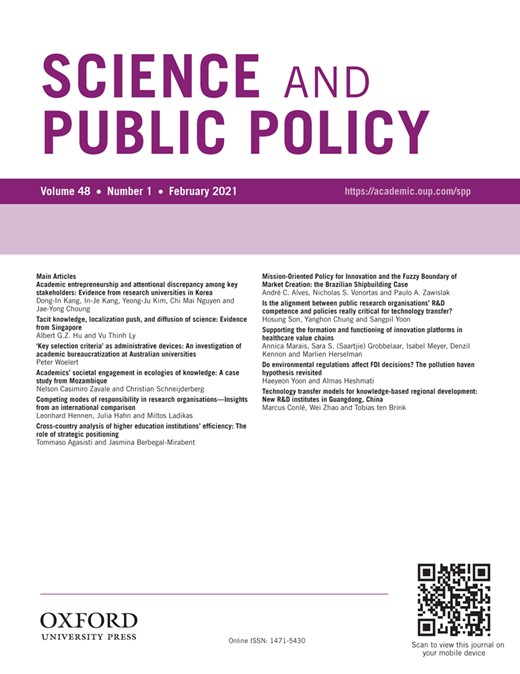-
Views
-
Cite
Cite
Marcus Conlé, Wei Zhao, Tobias ten Brink, Technology transfer models for knowledge-based regional development: New R&D institutes in Guangdong, China, Science and Public Policy, Volume 48, Issue 1, February 2021, Pages 132–144, https://doi.org/10.1093/scipol/scaa063
Close - Share Icon Share
Abstract
China has long struggled to make science and technology useful for industry. One essential element in overcoming this problem is vigorous knowledge infrastructure development. This article focuses on the most salient outcomes of recent organization-building initiatives in Guangdong: the ‘New R&D Institutes’ (NRDIs). We employ a process tracing approach including a mix of methods to systematically study NRDIs, and we examine the ways in which these institutes extend, and improve upon, previous Chinese approaches to technology transfer. We observe a flexible approach that engages a wide range of intra-regional and extra-regional knowledge actors and allows for the emergence of a variety of technology transfer models—including models that are better adapted to the local setting than those discussed in the literature. The article contributes to fragmentary knowledge on the role of technology transfer in China and to the literature on innovation policy in peripheral manufacturing regions.



